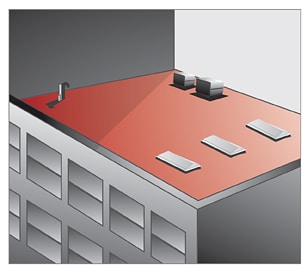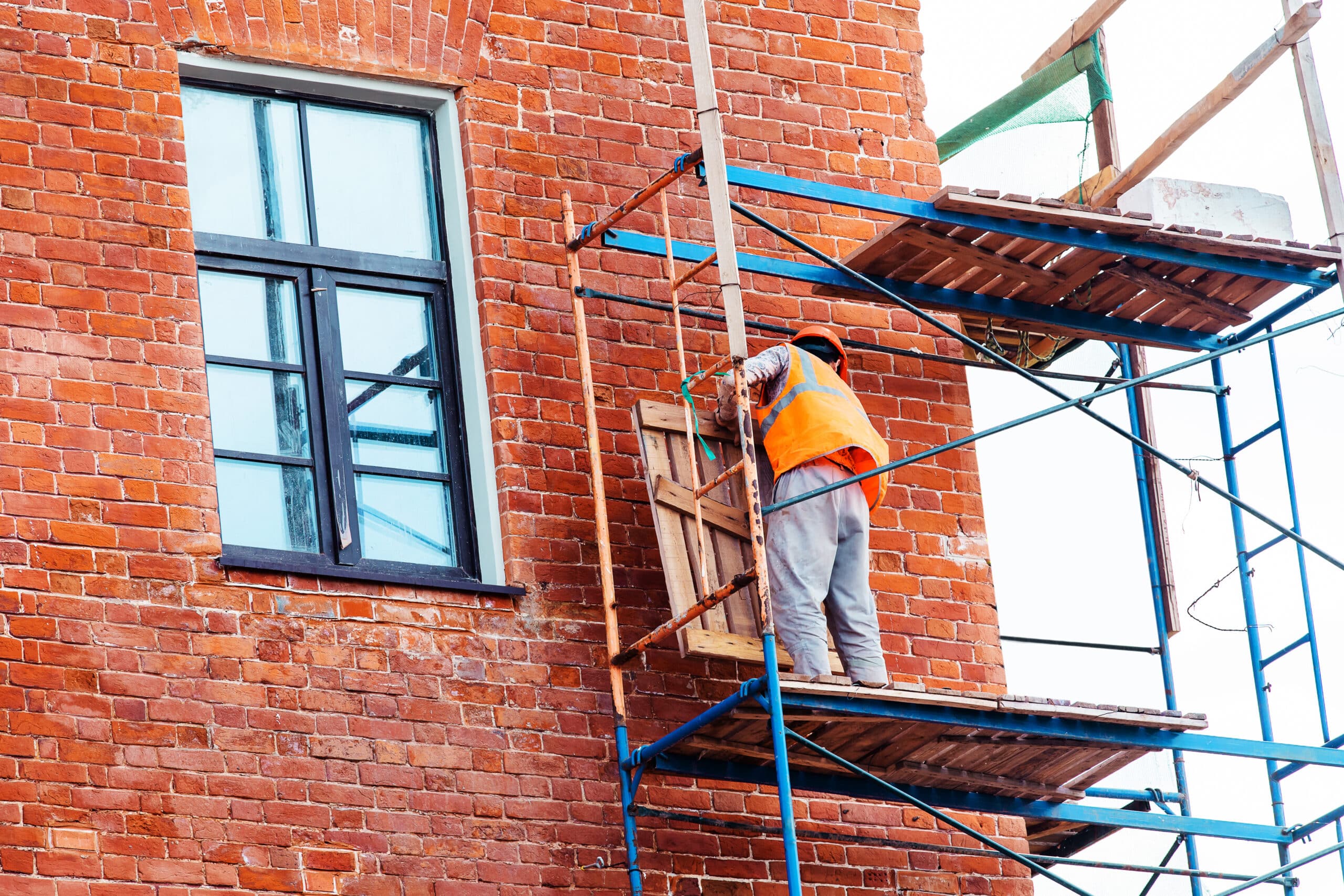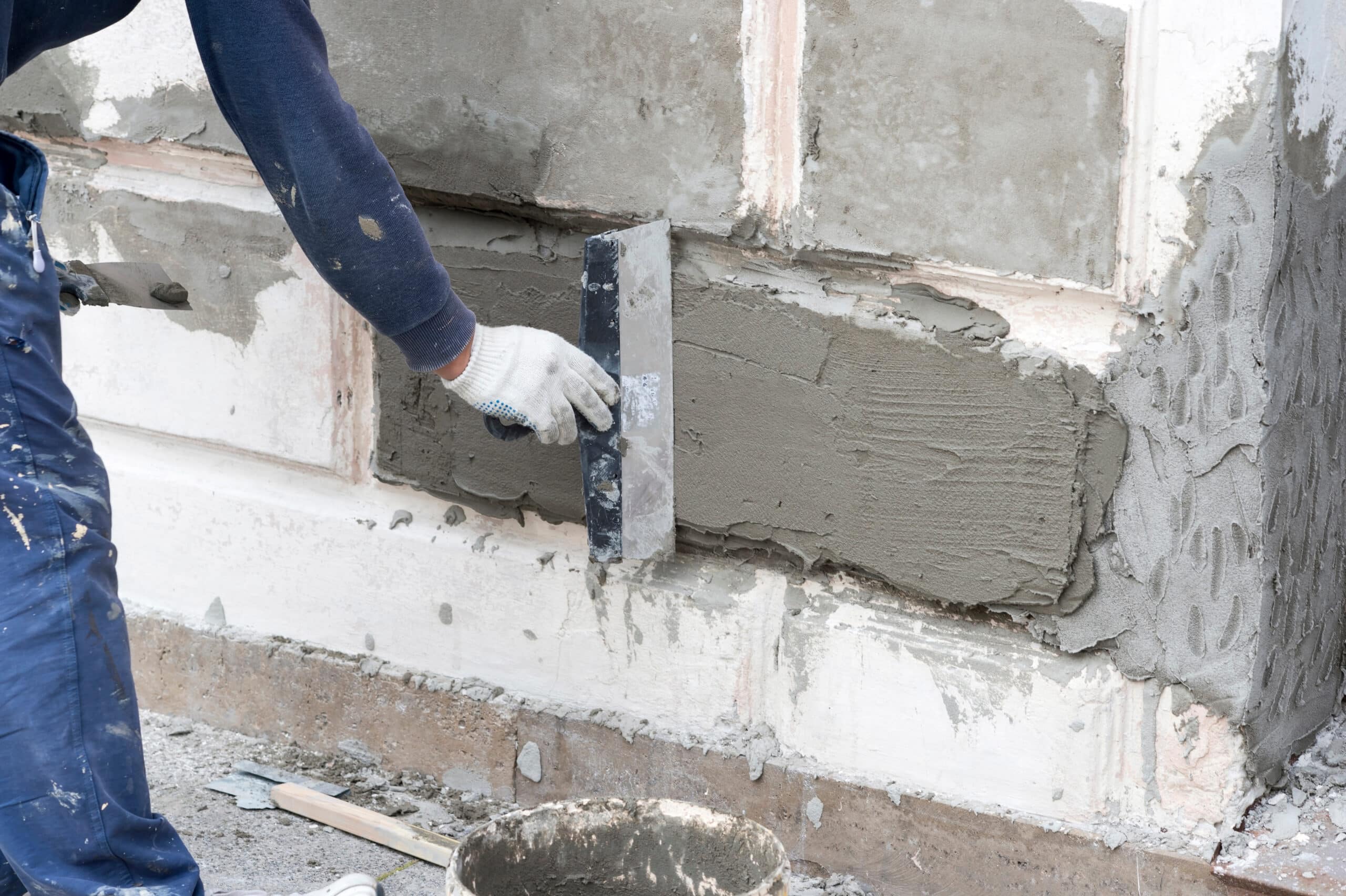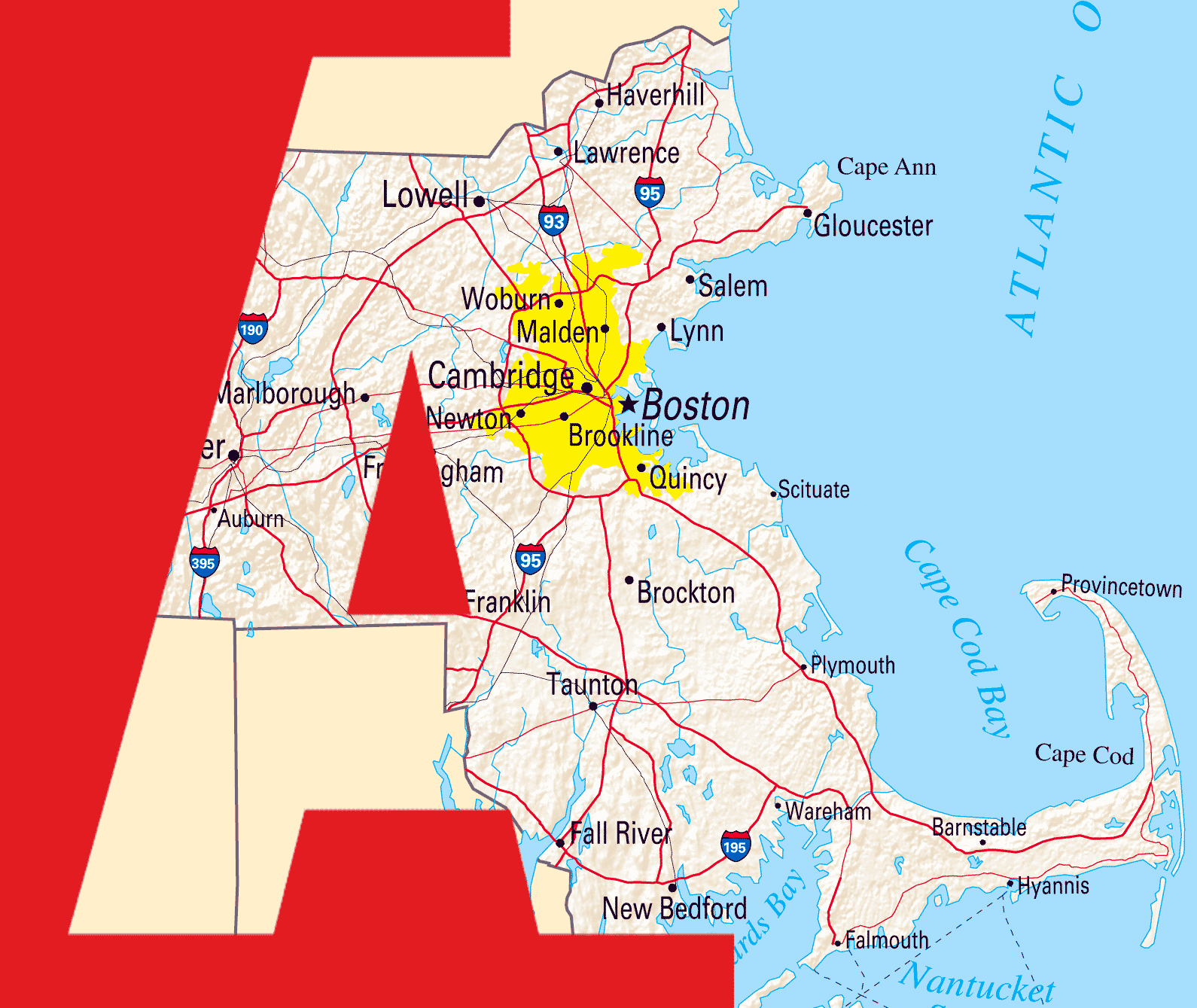BUILDING BASICS
Roofing Systems
Selecting the proper roofing type for commercial buildings requires knowledge of the available systems and their strengths and weaknesses.
This section presents the basics of the most widely used roofing systems in the Northeast:
- EPDM (the newest technology which is becoming most widely used)
- Built-Up Roofing
- Modified Bitumen
CONTACT US
ABOUT Roofing Systems
EDPM Membranes
Introduced in the late 1980s, polyester reinforced, single ply EDPM is the newest and most widely used roofing technology in the northeast. EDPM membranes are typically fabricated in single ply 45 millimeter thick sheets, and are produced by heat fusing or adhering two pieces of rubber membrane around a polyester scrim. These products are extremely fatigue and puncture resistant, featuring more than twice the tear strength of earlier formulations. Due to the enhanced tear resistance, EPDM systems can be installed in wider sheets (up to 11 feet wide), reducing the number of fasteners needed to secure the roofing material. Reinforced EPDM has superior durability and excellent design flexibility. They are designed for easy handling to reduce installation costs in the field.
Major factors contributing to the popularity of an EPDM roofing system include:
- Long-term weatherability (excellent resistance to temperature extremes, sunlight, ozone, and moisture)
- Flexural stability (elongation factor enables EPDM membranes to accommodate roof deck movement)
- Compatibility with a wide variety of polystyrene insulation products
- Ease of maintenance
- Proven long-term performance
Another major reason for the popularity of EPDM systems is their adaptability. Because EDPM can be installed by variety of application techniques (ballasted, fully adhered, mechanically fastened), EPDM roofing systems can be applied to virtually any roof surface (felt, spherical, curved, or slanted).
EPDM also offers re-roofing flexibility. Assuming the roof deck is
moisture-free, EPDM systems can be installed over existing roof
membranes.

Built-Up Roofs
The built-up roof system as offered today is provided in many versions:
- Hot-applied bituminous system, consisting of multiple plies of roofing felt or mat laminated with hot asphalt or coal tar pitch
- Cold process bituminous system, using plies of felt, mat or coated products that are laminated with a solvent-based bituminous adhesive (cutback) or emulsion (aqueous dispersion)
- Modified versions of bituminous systems, usually a polymer modification of the mopping bitumen, the coating of the felt, or the adhesive itself
- Hybrid bituminous systems, using a conventional base sheet or multiple BUR plies, surfaced with a modified bitumen cap sheet
- Non-bituminous systems, usually incorporating liquid-applied layers of a polymeric material into which a reinforcing mat is embedded; this system may be a water-dispersion using an acrylic resin or rubber latex, or a solvent-based system using neoprene, Hypalon, EPR or another polymer
Modified Bitumen
Modified bitumen is the fastest growing commercial roofing material. Modified roofing membranes are composite sheets essentially composed of:
- Bitumen
- Modifiers
- Reinforcing Materials
The coated sheets may then be left smooth, or factory-surfaced with granules or a foil facer.
Modifying asphalt with some type of polymer generally provides the following benefits:
- Increased softening temperature
- Reduced cold flow
- Improved low-temperature flexibility
- Elastic recovery may be imparted
- Enhanced resistance to deformation
The two most commonly used roofing asphalt modifiers today are:
- APP (Atactic Polypropylene), a thermoplastic polymer resin
- SBS (Styrene-Butadiene-Styrene) block copolymers, a thermoplastic rubber elastomer
APP Polymer
Originally, APP was an abundant, inexpensive by-product of the isotactic polypropylene (IPP) process used to produce packaging, fibers, and other modified and extruded products.
Today, APP is primarily being produced to specifically address the needs of the roofing community.
A thermoplastic polymer, APP forms a uniform matrix when added to bitumens to enhances the following properties:
- Ultraviolet light resistance
- Flexibility at high or low temperatures
- Resistance to flow at elevated temperatures
- Resistance to water penetration
- Improved flexibility
Due to its chemical composition and thermoplastic characteristics, APP is usually applied with a propane torch.
SBS Rubber
SBS is a thermoplastic rubber consisting of two distinct and incompatible polymer blocks or segments: polystyrene and polybutadiene. The polymer blocks are usually arranged is diblock, triblock, or branched configurations.
Since styrene and butadiene are chemically incompatible with one another, the glassy polystyrene end blocks of adjacent molecules tend to associate in small, rigid domains.
These associations behave like cross-links, or glue, to hold the longer polybutadiene mid-block segments together in a three dimensional rubber network.
This physical cross-linking and reinforcing effect of the polystyrene domain imparts high tensile strength to SBS rubber. High elasticity and fatigue resistance are imparted to SBS through its rubbery polybutadience midblock.
Polystyrene provides excellent flow resistance at elevated temperatures, while the polybutadience segments impart cold-temperature flexibility due to their extremely low glass transition temperature of -121 degrees F. When SBS is added to asphalt, it takes advantage of these physical properties to transform the material.
SBS membranes can be mopped in hot asphalt, applied with cold-process adhesives, self-adhered or heat-welded. Whichever modifier is used, it must be compatible with the specific type of asphalt chosen. In order to maintain long-term stability and weatherability, it is important that the asphalt contains the right percentages of chemical fractions.
Adequate blending of the asphalt and modifier is also critical, especially since different polymer types also require a variety of blending regimens.
ROOF MAINTENANCE
All roofing systems, no matter how well-constructed, well-designed and well-installed, can only benefit from regularly scheduled upkeep.
Semi-annual inspections combined with routine care can:
- Extend service life
- Minimize unanticipated problems
- Provide added security to building contents and tenants
- Keep operating expenses within budget and permit planning for future capital expenditures
A comprehensive roofing program that can be budgeted and funded properly is particularly helpful for building owners and managers who must justify expenses.
Good maintenance practice calls for a minimum of two roof inspections per year – spring and fall. Inspections should also be performed after extreme weather episodes such as ice and snow storms.
One of the best reasons to perform regular roofing inspections and maintenance is the potential long-term cost savings. With regular maintenance, it is possible, that the life of a 20-year roof can be extended to 30 years — a large payoff for a relatively small outlay of time and money.
When inspecting a roof, the following approach/checklist should be helpful:
- Remove debris and/or vegetation from roof surfaces
- Assure that there are no areas of ponded water
- Make sure that drains are clear
- Check clamping rings on drains for a secure fit
- Inspect caulking on metal flashings and pitch pans
- Visually inspect seams to establish that they are watertight (modified, EPDM)
- Observe ballast for wind scour (EPDM)
- Look for signs of puncture
- Top off pitch pans
- Examine areas around ventilators for damaged flashings
- Identify trends in traffic patterns and wear
- Examine for excessive cracks or blistering
ROOF REPLACEMENT
No matter how well it has been maintained, every roof must eventually be replaced. It is often difficult to decide whether to recover the old roof or tear it off and start from scratch. Avoiding removal of the old roof is the best option, depending its condition.
Generally, if the roof is leaking, it must be torn off. Water penetration causes damage to the insulation and/or the roof deck. Covering a wet, leaking roof can lead to significant corrosion damage and the inevitable roof replacement, this time done appropriately. Typically, the roof must also be replaced when there is more than one roof over the deck (as the chances of trapping moisture increase with every layer of roofing material). In order to determine the feasibility of recovering an existing roof, contractors should perform a through visual inspection including test cuts to determine the roof’s condition.
REPLACE OR REPAIR?
Replace the roof if:
- It is leaking beyond repair
- There is excessive blistering
- Repairs become more frequent
- It is excessively delaminated
Repair the roof if:
- Its life can be extended
- Cracks/blisters/open seams are minimal
RECENT BLOG POSTS
Proudly Serving Greater Boston
& Eastern Massachusetts

Wet Weather and Commercial Masonry Restoration in MA
Here’s a closer look at how wet weather and prolonged moisture affect commercial masonry restoration in MA.
Read More
Concrete vs. Brick Restoration Part 2: Differences
To better understand the process and importance of concrete restoration in Massachusetts, let’s take a look at how it differs from brick restoration.
Read More
